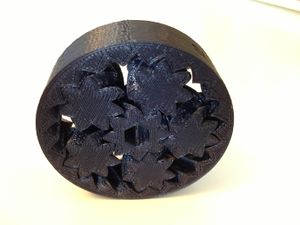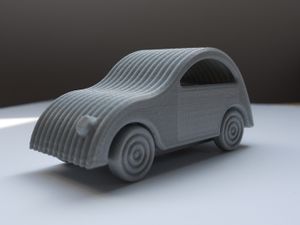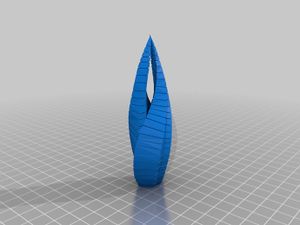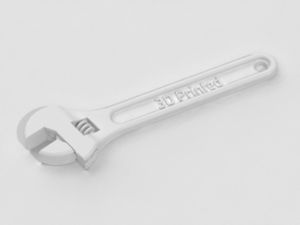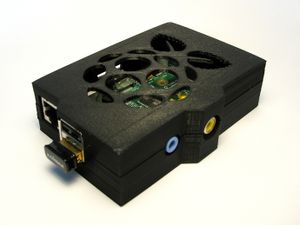User:Tunkelbs
Introduction
My name is Brandon Tunkel and I am currently a senior studying Mechanical Engineering at Penn State.
Blogs
Blog 4
Reprap and Arduino
In this keynote, the business models and overall strategies of the RepRap and Arduino projects are explained. These two projects are unique in that they both generate revenue in a very non-traditional way.
RepRap is a project devoted to creating self replicating 3D printers and providing all the hardware and software for free. All the parts and plans for the printers are posted online and the only cost comes from buying electronics and assembly parts, such as rods and screws that cannot be printed. This model does not generate money through sales, like a normal product would, instead it provides the data required to make a product, and the user supplies the cost, in the form of plastic filament. RepRap also allows companies to create their own modifications to existing printers and sell them for profit. This model is similar to many Linux environments. The Linux operating system is open source, but some developers create unique IDEs and sell them. While this idea is a refreshing new method compared to other, stale business models, some problems appear. Because modifications are so easily made and so many users have access, new designs will constantly appear. While this can be a good thing, it also means that many variants develop and it is nearly impossible to determine the merits of one over the other.
Arduino on the other hand does not sell an actual product. They created a platform for electronic prototyping through a microcontroller and software, but Arduino does not create the microcontrollers. Instead they released open source hardware for the official boards and allowed manufactures to make their own. Other companies can create and modify Arduino boards, while Arduino makes money on the intellectual property of the project. This model allows developers to use Arduino to create and sell anything, while still supporting the project. Google's Android operating system has a similar business strategy, although Google also has their own version of Android. Phone manufactures create their own modifications to the Google OS and release phones with their unique Android version, and Google makes money from the IP of Android. Again, this model creates many product variants. Looking at Android, every phone maker has their own Android with not enough incentive to incorporate the best features from all the different versions.
Blog 3
Classmate's Blog Posts
I think the layout of Abbie's wiki page, found here is very well done. Her first blog post is also very good. She gives a lot of information on why she picked each object, not just a single sentence. The only issue is the text begins to not line up with the picture thumbnails at the bottom of the post, but that is a very minor problem.
Leo's second blog post is a very interesting read. He explains the 3D Hubs concept very well, and also explains how it may impact the future of 3D printing. I was especially intrigued by the idea of a private owner using his or her 3D printer commercially for a small profit. Leo's first post is unfortunately missing thumbnails of the objects, which I think would add to the post. I also think placing the links in each section instead of all at the end would be a better design choice.
Blog 2
3D Printing DRM
With the spreading popularity of 3D printing, another idea is also gaining traction, DRM on 3D printers. DRM, or digital rights management, is a method of restricting devices in an attempt to protect intellectual property, or IP. The music and video games industry introduced many forms of DRM, usually methods that limited the functionality of the device accessing the game or song. This idea of restricting users from easily accessing their data has been called "defective by design," with large anti-DRM groups calling for the removal of all DRM services. While some claim that digital piracy and other illicit file sharing is hindered by DRM, nearly every previous method of DRM has been negated by clever hackers, and only one needs to solve the DRM to make it ineffective.
DRM has now turned towards 3D printing. New companies are starting up with plans to impose DRM restrictions on 3D printers. Authentise is a company with a plan for a streaming DRM method called SendShapes that prevents users from ever storing 3D models on their own machines. Nathan Myhrvold now holds a patent for 3D printers that requires online checks before every print. This movement towards DRM controlled printers greatly limits the capabilities that 3D printers could normally have.
Large companies are using DRM to stop production on 3D models of their IP. Recently, the video game company Square Enix sent a cease and desist to small 3D printing shop Shapeways to stop selling 3D printed figures from their Final Fantasy VII game. HBO shut down sales of a 3D printed Game of Thrones themed Iphone dock. With more and more 3D models ready for printing, more companies are likely to start trying to control the abilities of printers to protect their properties and sales.
Blog 1
A: Something amazing and beautiful
For a gear set to work properly, the gears and bearing must fit nearly perfectly. A 3D printer can consistently create a working gear set thanks to this design, something I consider amazing. Gear Bearing
B: Something funny or strange
Compared to the some of the highly detailed car models found on Thingiverse, this simplistic car model seems slightly strange. The model uses many elements from the Citroen 2CV, but the creator uses his own interpretations of the car to create his or her own creation. 2CV Car
C: Something useless
While this model may look interesting, it has no real purpose or use beyond owning. The model comes from the game series Dead Space. Marker
D: Something useful
What is more useful than a hand held tool? This model is a fully working adjustable wrench made entirely out of PLA. The wrench is printed all in one piece and the only assembly step is to remove the internal support. Wrench
E: Raspberry Pi case
Out of the many cases found on Thingiverse, I liked this case the most. The alternate top has the Raspberry Pi logo on it, which also allows for some airflow onto the circuit board. The port openings also seem to fit very nicely with the board, and the case itself is still very compact. The original case has a different top than what I found. Raspberry Pi top
With the growing popularity of 3D printing and the size of the Thingiverse community, I am not surprised at the amount of things that can be 3D printed. What is more impressive is the amount of models created than cannot yet be printed, although that may soon change.
